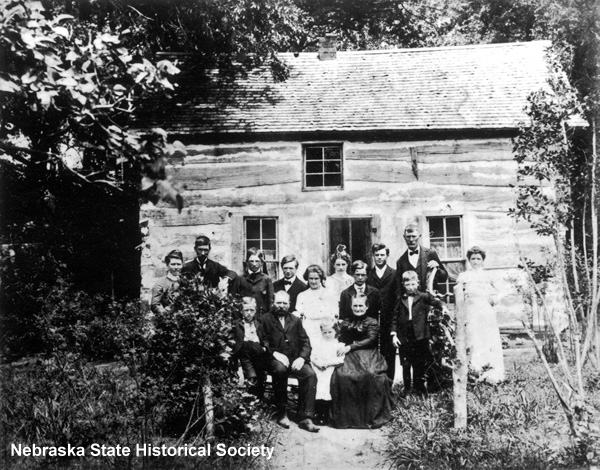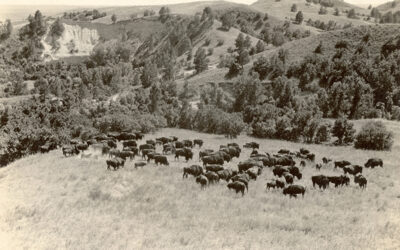Historian Everett Dick referred to the Great Plains as the “sod-house frontier,” and Nebraska photographer Solomon Butcher made many iconic images of soddies, but frontier Nebraska also saw its share of log cabins. Roger Welsch explored the subject in a 1980 Nebraska History article.
 Jacob S. Hunt log house near Wilber, Nebraska, 1903. NSHS RG813-194
Jacob S. Hunt log house near Wilber, Nebraska, 1903. NSHS RG813-194
Welsch wanted to study Nebraska log cabins as an expression of folklore, to see “what happened to the waves of log-house tradition as it waned and died on the treeless Plains.” Welsch writes:
The first settlers, after all, did not seize upon the idea of the sod house, embrace it, and abandon all they had known for centuries. They knew about log construction, they preferred it, and so as far as possible and as long as possible they built with logs.
Welsch studied extant log houses and all the Nebraska log house photographs he could find in the Nebraska State Historical Society collections and elsewhere. He observed:
Nebraska timber was not only scarce but also short, knotty, and convoluted. Rare were the tall straight trunks necessary for a large, tight log house. Such timber is the result of forest competition and full moisture in climax woodlands, a notably rare Nebraska feature.
This resulted in cabins with large, uneven gaps between the logs, which were sealed by chinking:
Chinking is surprisingly durable and efficient caulking, but where the soil was not fine enough to form a good mortar or where chinking was carelessly done (which was always possible: the average size log house has approximately 1/2 mile of linear chinking!) a storm could turn a house into little more than a roofed cage.
Welsch also writes about the hows and whys of foundations, roofs, and chimneys (Did you know that limestone tends to explode when heated?), the placement of windows and doorways, the plastering and whitewashing of interiors. If you want to understand how Nebraska log houses were built and lived in, this article is a great introduction.



